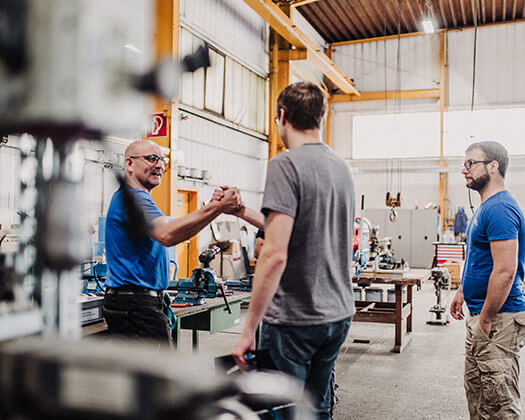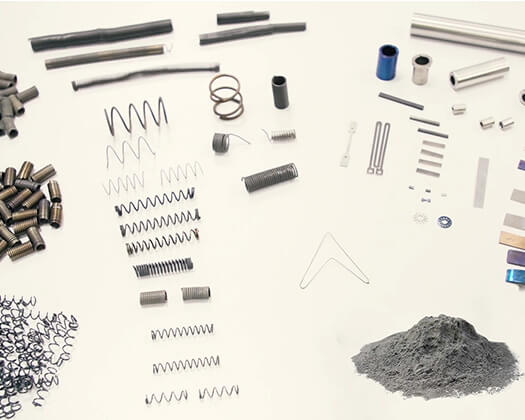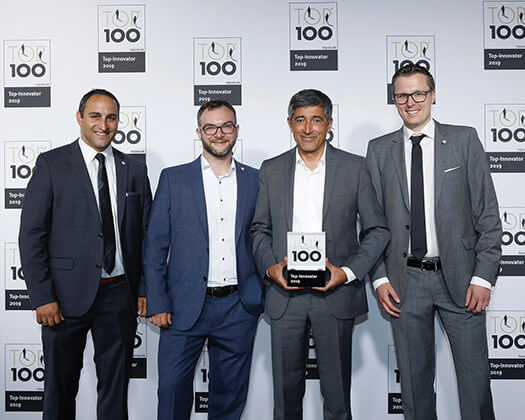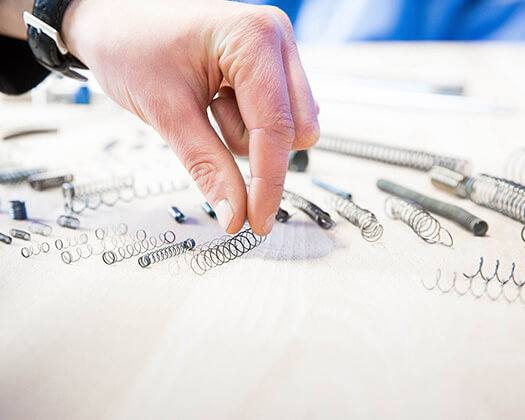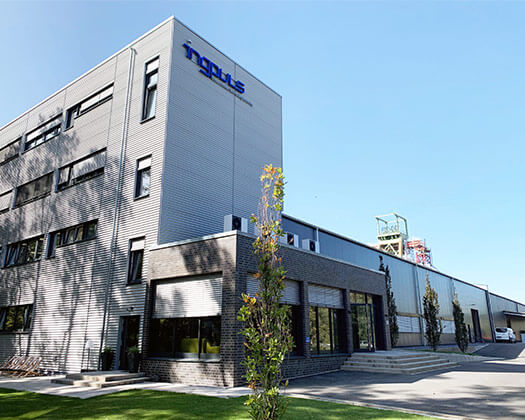
How are shape memory alloys produced?
In this section you will learn more about the production of shape memory alloys (SMA) and deepen your knowledge from the first parts of this course.
Based on some metallographic basics, you will get to know shape memory alloys with more than two alloy components and their typical application areas. Thereafter, you will gain a more in-depth understanding of martensite and austenite with regard to SMA and learn the underlying reasons for the geometric precision of your shape memory alloys. In addition you will understand the effects of heat treatments during production on the properties. Also, you will find more details on heat treatment for defining desired shapes, referred to as shape setting. Next you will learn about common and alternative processing methods of the various NiTi SMA provided by us. In the last section, you will find more details on surfaces and the use of shape memory alloys in bonded / composite materials.
Alloys and material design
In the section semi-finished products and components you learned about binary NiTi shape memory alloys, that is to say SMA with two components. The shape memory alloys currently available at Ingpuls almost exclusively based on the components nickel (Ni) and titanium (Ti). This is where we display an exceptional world class expertise. Even the smallest of changes (e.g., 0.01 At %) in the composition ratio will result in your SMA reacting differently. This applies in particular to mechanical behavior and transformation temperatures.
In the guise of this, we avail of our expertise in material design to design your functional shape memory alloys specifically for your application and your industry. In order to be able to produce according to your requirements, NiTi based shape memory alloys with more than two alloying components are also available to you, meaning we can customise your product by adding other elements. You can find out which properties and areas of application can be obtained by adding which additional alloying elements
by downloading the full SMA course as a PDF HERE which also includes a concise summary for future reference. It includes a concise summary for later reference.
Martensite und Austenite
The properties of shape memory alloys are determined by the microstructure. As previously mentioned in other sections, such as Application or Characterisation, the shape memory effect results from a phase transformation between martensite and austenite which is responsible for the different behavior of the shape memory effect. As you will remember: With martensite as their microstructure, NiTi shape memory alloys are seemingly plastically deformable and the microstructure of the element converting into austenite during heating. During the heating process, the element will remember its previously programmed shape.
For example, a bent wire will straighten up or a compressed spiral spring will expand back to its original shape. The conversion taking place is geometrically unambiguous because austenite exhibits a highly symmetrical crystal structure and therefore will not permit other shapes. In the free course, you will find out the reasons behind the geometric precision and the background of the phase transformation with superelastic material. Click here to receive immediate and free access to your SMA-course.
Cold forming and heat treatment
In order to refine the micro structure of shape memory alloys (SMA), SMA has to ungergo several process steps. For this you will need to alternate between cold forming and heat treatment (intermediate annealing) and in most cases a final heat treatment in order to set the parameters: The latter is referred to as the shape setting heat treatment. In the SMA course you will be given some information about parameters and their backgrounds as well as finding out why cold-formed shape memory alloys exhibits hardly any shape memory properties or none at all.

Shape setting heat treatment
The heat treatment for shape setting is the stage during which a specific shape is programmed into an SMA component. This process is commonly referred to as “shape setting”. You have already learned the principles of shape setting by heat treatment in the Characterization section. For this purpose, usually a shaping tool with a target shape is chosen. Your component will be fixed into the tool before the shape setting
heat treatment takes place. In the course, you will also get to know some of the types of tools and processes being used. Furthermore, you will learn why overheating your component during manufacture – or in use – will permanently impair the performance of your shape memory alloys component.
Machining
You may be quite familiar with several machining technologies for removing conventional material, such as drilling, turning or milling. In principle, these methods can also be used for NiTi shape memory alloys. However, some material properties of SMA make conventional processes more challenging.
Machining creates a high, local heat input into the workpiece. Without extensive additional measures this will lead to local changes in the material structure. Find out what the effects of using conventional methods are by downloading your free course here.
Alternative production and processing methods
There are also some alternative production and processing methods at hand. With shape memory alloys, no single process can be described as the best one when handling SMA: You ought to weigh up the advantages and disadvantages of the respective processes for your specific application.
In your SMA course we have listed the most common alternative production and processing methods for shape memory alloys. In addition, you will find out more about available process routes such as powder metallurgy or the option to produce SMA within a thin-film process using so-called sputter targets.
Surface processing
Especially the titanium contained in NiTi SMA proves highly reactive. If you don’t counteract that reaction, you will find a thin oxide layer (of type TiO) forming during the production process. To prevent this phenomenon, you should perform casting processes and heat treatments under vacuum. However, a defined oxide layer may also prove desirable since it exhibits an auto-passivating effect. This way, it protects against corrosion and contributes to NiTi SMA’s good biocompatibility. For the efficiency of the overall production, each case must therefore individually be examined in order to determine the exact advantages and disavantages; i.e.
in which process an oxide layer creates more advantages and from which point onwards it turns into a disadvantage. In some cases, the processing of surfaces may be undertaken purely for aesthetic reasons. For this, usually you will refer to established processing methods that are common for surface treatment (for example grinding, vibratory polishing, polishing, pickling or electropolishing). But besides creating your desired surface ex post, even at the manufacturing stage are you able to positively impact the desired surface by choosing the right processing steps and production parameters.
In the course you will learn about the reasoning behind choosing particular types of surfaces and find out which types of application typically go hand-in-hand with which surface type. Furthermore, the tools required for achieving these surfaces will be outlined. Download your free PDF course here here and take your first step towards shape memory alloys today.
Coatings and composite materials
In addition, it is possible to use NiTi-SMA as coatings, portraying several advantages. While SMA is not favourable for achieve good bonds with polymers, inversely, tools for injection moulding coated with SMA prove advantageous. What SMA is to the injection moulding process, Teflon is to a pan. You will be able to achieve longer lasting moulds and injection moulded products that are more precise, saving you big time on costs in maintenance and servicing. SMA coatings are however also perfectly suited for the compensation of thermal play or for vibration damping.
In both cases, alloys which portray superelastic properties at the operating point (operating temperature) are used. You will remember that the metal then reacts like rubber. As example, when other elements expand, shape memory alloys can contract. When other elements contract due to cooling, shape memory alloys can expand. The mechanical hysteresis of the superelastic SMA is excellent for damping vibration. In a loading and relief cycle, the mechanical energy of the vibration is converted into heat via phase transformation within the NiTi.
This heat is then expelled into the environment. This is how you can extend the service life of bearings, transmissions, wind power installations or machines. If the coating is heated further by an additional system, the mechanical properties can be influenced. So if your SMA coating is coupled to machine parameters, shape memory alloys coatings help you achieve the perfect degree of damping for each operating condition. The possibilities are unlimited!

Let’s recap what we’ve learnt in this section:
- There are binary NiTi SMA (with two alloying components) and higher grade NiTi SMA (with more than two alloying components)
- Conversion to austenite is geometrically unambiguous; therefore the shape can be precisely determined beforehand
- To achieve the desired shape memory behaviour, various targeted heat treatments are essential
- during manufacture/production (especially annealing)
- in the stage of shape setting (aka shape-setting heat treatment)
- For the production and processing of NiTi, conventional and alternative processes can be used
- These affect both the geometric shape and the surfaces. However they are subject to some significant restrictions (in particular machining)
- SMA can be suitable combined with one another and with other materials using appropriate processes
- By using SMA coatings, vibrations can be damped, thermal compensation created, and injection tools can be optimised

